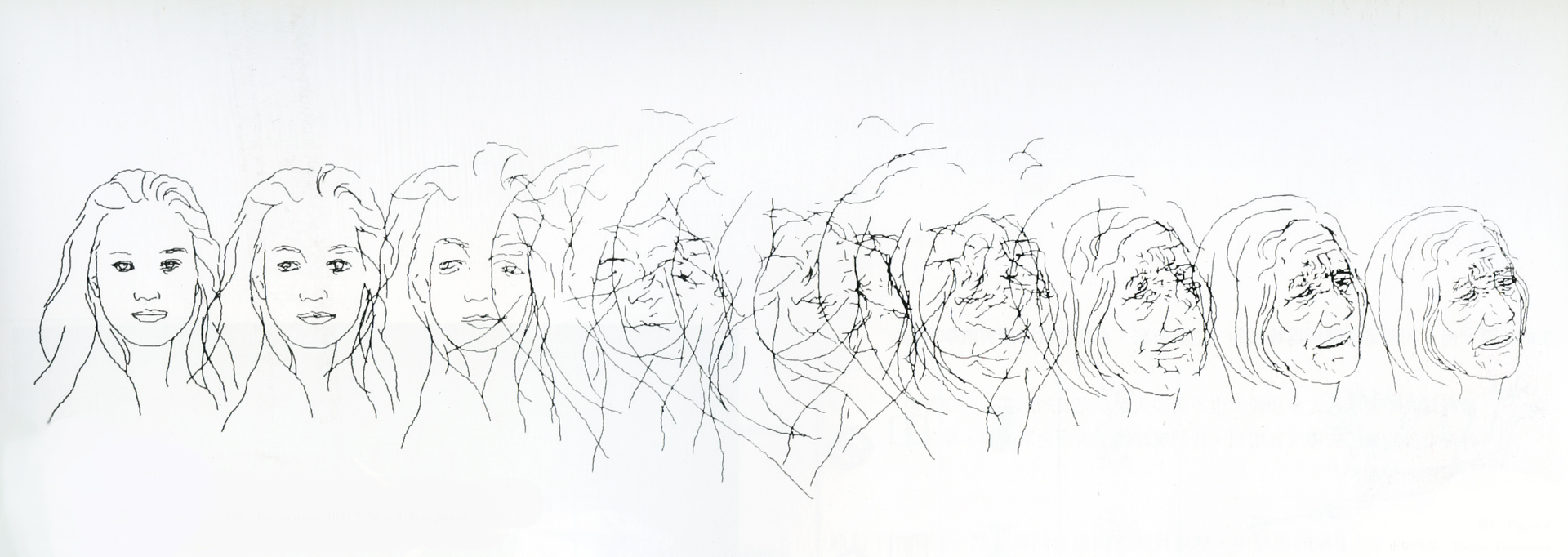Charles A. Csuri: Aging Process
Artist(s):
Title:
- Aging Process
Exhibition:
Creation Year:
- 1967
Medium:
- Ink on paper, IBM 7094 and drum plotter
Size:
- 38 x 94 cm (15 x 37 in)
Category:
Keywords:
Artist Statement:
Within the process of image creation, the artist can delegate to the computer decisions that are at a lower level of the control hierarchy. He defines the elements and rules, which the computer has to follow. The elements might be flies and the rule chosen might be an equation that deals with conformal mapping. In one of his early works, Flies on the Miller Transformation (1967), Csuri had the computer generate a large number of flies. With a pseudorandom number generator, they were distributed and positioned in the region of a triangle. The flies then were mapped into the region of a half-circle. Another example is the morphing of a young woman into an elderly woman in the Aging Process (1967).
The drawings were broken down into line pieces, representing the elements to be manipulated. The rule then defined certain parameters of the dissolution of the young woman and the emergence of the old woman. All these procedures contained a certain aspect of surprise, although all events in the computer are strictly deterministic. Today, Charles Csuri says that these procedures have changed his “conception of control” and creativity:
“When I did a traditional painting, I was thinking in terms of start, beginning, and some end point–a painting, a drawing. Today I don’t have the expectation in the same way. I explore the computer as a search engine for art. I am hoping that when I set up that environment, there will be something I cannot think of.”
Already, while he was using the pantograph, Csuri started playing with the notion that he could not anticipate or imagine the result of the rules be had set up. In one of his first articles on computers and art, he stresses that the computer can help to overcome certain “set producing tendencies;” certain patterns of thinking. The artist “usually gets only slight variations on a basic structural theme. A mathematical orientation toward visual problem solving can enable the artist both to break down his biases and to express another range of solutions.”





